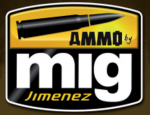Mon Closed
- £5.95 P&P
- for all mainland UK deliveries
-
Accurascale
-
AIP
-

Ammo Paints by Mig Jimenez
-
Cavalex Models
-

EFE Rail
-
Games Workshop and Warhammer
-
Hattons Model Railways
-
Matt Finish
-
Oxford Rail
-
Parkside Dundas Plastic kits
-

Plastruct
-
Rapido Trains
-
RevolutioN Trains
-
Train Tech
-

Hornby Model Railways
-

Bachmann
-

Graham Farish N Gauge Model Railways
-

Heljan
-

Scalextric
-

Airfix Plastic Kits
-

Revell Plastic Kits and Paint
-

Dapol Model Railways
-

Peco Track, Trains and Accessories
-

Humbrol Paints
-

Expo
-

Deluxe Materials
-

Woodland Scenics
-

Javis Scenic Materials
-

Metcalfe Card Kits
-

Oxford Diecast
-

Noch
-

Wills
-

Ratio
-

Evergreen
-

Tamiya RC and Plastic Kits
-

Gaugemaster
-

Italeri
-
DCC Concepts
Hornby R3634 SR Lord Nelson Class 4-6-0 '851' Sir Francis Drake
Technical Specification & Detail
| Gauge | 00 |
| DCC Type | DCC Ready |
| Period | Era 3 (1923 - 1947) |
| Operator/Livery | SR, Lined Green |
| Designer | Richard Maunsell |
| Entered Service | 1928 |
| Minimum Curve | 2nd Radius + (438mm) |
| Age Suitability | 14+ |
| Motor | 5 Pole Skew Wound. Loco Drive |
In order to cope with the steadily increasing weight of express passenger traffic on the Southern Railway in the early years of Grouping, Richard Maunsell, the Chief Mechanical Officer, needed a locomotive that was more powerful than the King Arthur class, but one that would still conform to the various gauging and weight issues within the region and still be capable of hauling 500 ton trains at a speed of 55mph.The new Lord Nelson design had to fit within the profile of the King Arthur class and having previously used a Drummond four cylinder locomotive as a test bed, Maunsell altered the positions of the cranks on the Lord Nelson design to give eight exhaust pulses per revolution, rather than four.
The resulting increase in power over the two cylinder design of the King Arthur class was significant. A longer, Belpaire boiler, with a completely differently designed firebox was used, the cab design was similar to the L1 4-4-0 and the bogie was of a new design, being independently coil-sprung.Maunsell decided to produce one example as a prototype, ordered from Eastleigh Works on May 29, 1925, which replaced the last engine on an existing King Arthur build order. The locomotive, No. E850, was completed on August 11, 1926 and after trials at Eastleigh, was sent to Nine Elms for trial running on the Western section mainlines to Bournemouth, Portsmouth and Exeter, before moving across to Battersea for trials on the Dover boat trains.
Although areas for improvement were noted, there was enough confidence in the locomotive’s design for a further fifteen engines to be ordered; ten on March 13, 1927 and a further five on March 23, 1928. These locomotives were completed at Eastleigh between June 1928 and November 1929 and once the decision was taken to name the class after naval leaders, the Southern Railway’s publicity department went to work promoting the introduction, basing their claim of the class being “the most powerful express locomotive in Britain” on the theoretical tractive power of 33,300lbf.
Both Maunsell and his successor, Oliver Bulleid, bought a number of modifications to the class, the most noticeable being the introduction of smoke deflectors, but chimneys, bogie frames and cylinders were all modified, giving a subtle range of external differences over the pre-war appearance of the class. Post-war, speed recorders and AWS apparatus were added by British Railways, but it was the range of tenders that added interest. For most of their service life, the class ran with flat-sided 5000 gallon bogie tenders, but modified Urie style 5000 gallon bogie tenders from the S15 class were also used, along with 4000 gallon six-wheel tenders.
The first withdrawal came in May 1961, the last in October 1962 and one locomotive, No.30850 Lord Nelson, was saved for preservation in the National Collection. Built at Eastleigh in May 1928, 851 Sir Francis Drake entered traffic at Nine Elms, before moving to Stewarts Lane in June 1932. In February 1940 Sir Francis Drake returned to Nine Elms before heading south to Bournemouth in February 1943. An accident at Byfleet in December 1946 led to a major rebuild prior to a move to Eastleigh in January 1949, from where the locomotive was withdrawn in December 1961.
0 x item(s)
- 1. Trains4U T4UUC Pack of 12 Wheel Chocks - Unpainted
- 2. Revolution Trains RT-OO-IHA-404A IHA Steel Carrier Ermewa
- 3. Revolution Trains RT-OO-IHA-404B IHA Steel Carrier Ermewa
- 4. Accurascale ACC2011 BR Oleo 13" Buffers
- 5. Hattons H4-WW-017A 50t KWB 'Warwell' GPS bogies MOD 1990's Green
- 6. Trains4u OOCradle OO Warrior Transport Cradle 1/76 Scale
- 7. Scalextric C4326 Dodge Charger RT - Sublime Green
- 8. Dapol 4F-050-106 O&K JHA Yeoman Middle Hopper Wagon #19398 Late
- 9. Cavalex Models HAA01 R TP T(3) HAA Triple Pack (Set 3)Red Cradle
- 10. Accurascale ACC2128-VTG3 JSA Wagon Twin Pack - VTG 3






